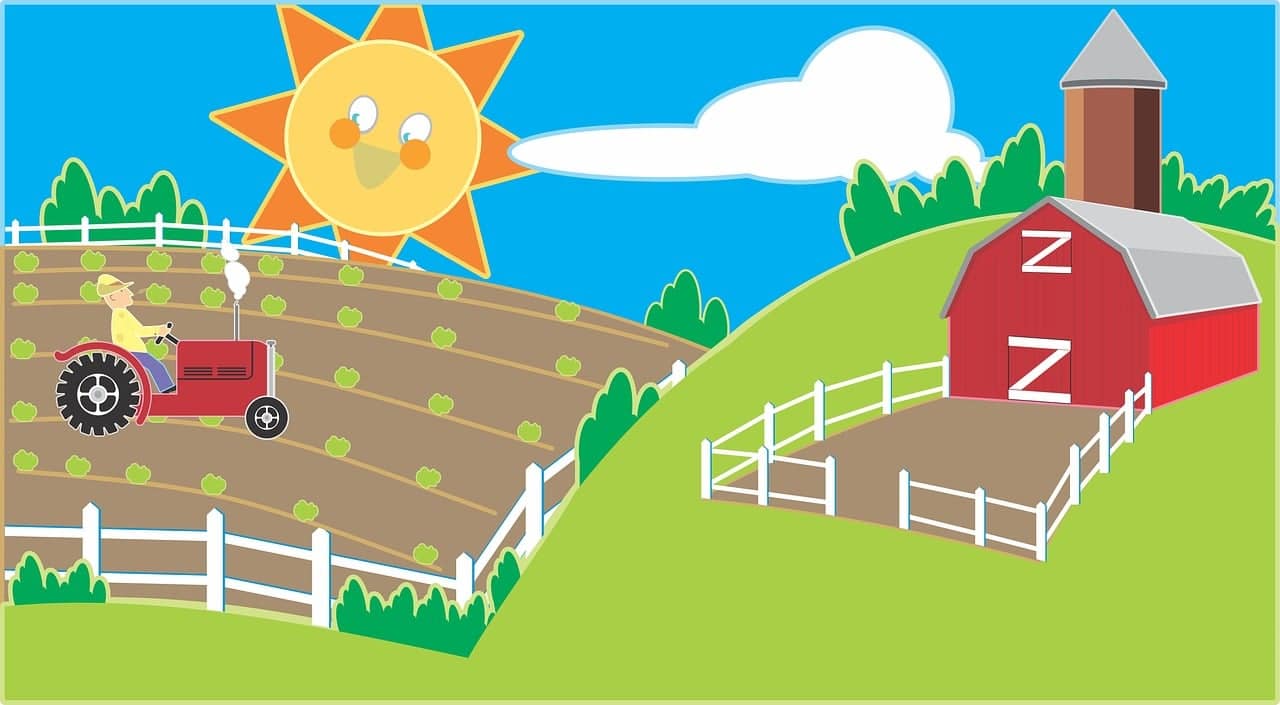This post may contain affiliate links. Probably doesn’t, but it might. It doesn’t cost you anything extra but if you use these links to buy something, we may earn a commission.
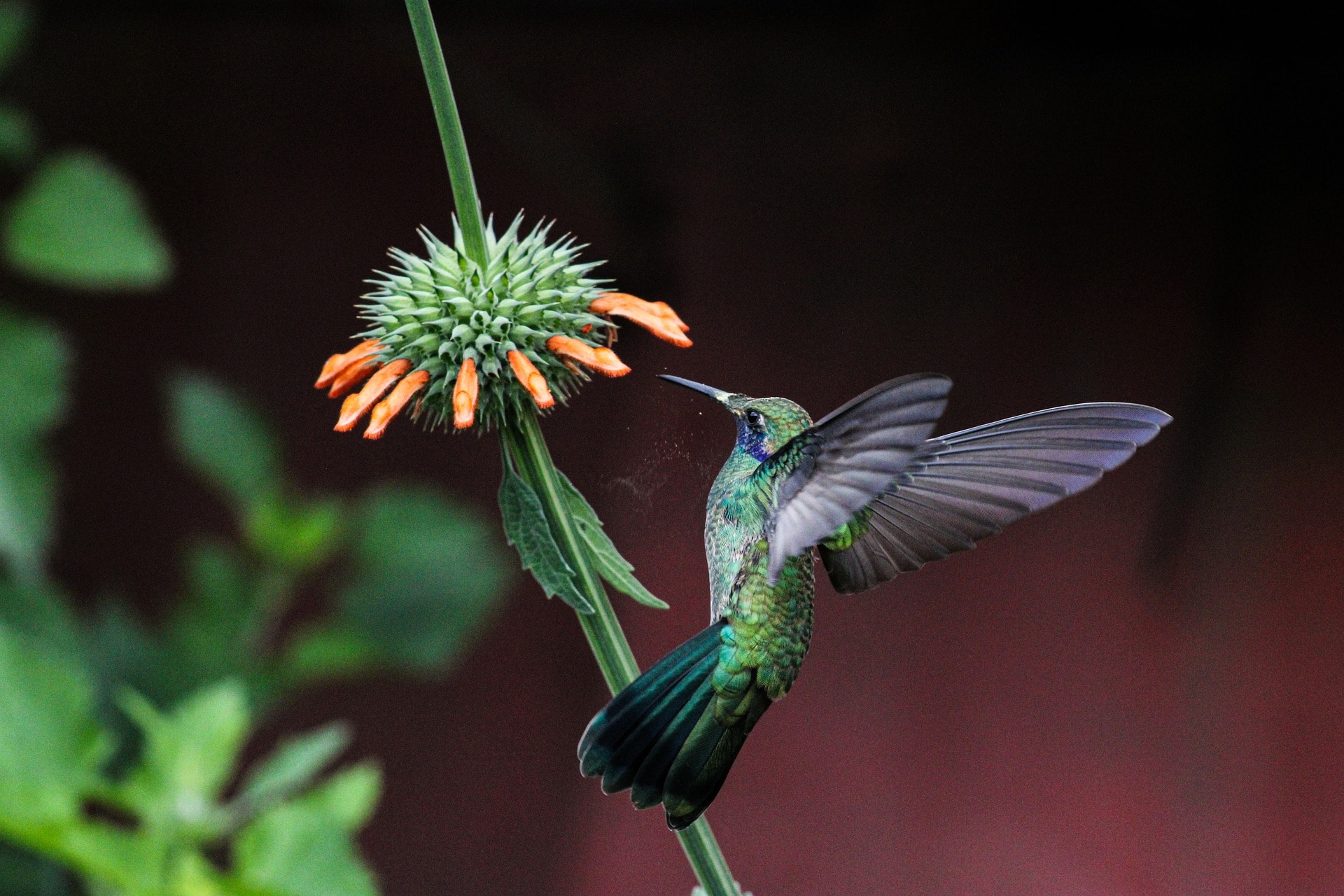
This post may contain affiliate links. It doesn’t cost you anything extra but if you use these links to buy something, we may earn a commission.
Are you fascinated by hummingbirds? There is something wondrous about watching them flit among your flowers in the garden. The speed of those beating wings—about 50-60 beats per second! No wonder we can’t see the wings as the bird hovers. The speed of those wings causes the vibration which sounds like humming, which gave these birds their name.
With the fastest metabolism among vertebrates, hummingbirds convert the nectar into fuel very quickly. With a heartrate range of 250 to 1200 bpm, the hummingbirds have an amazing adaptability to circumstances.
The average hummingbird weighs less than a nickel and can fly 30 mph. They defend their territory from jays and crows, and use discarded spider web strings to make their nests. Hummingbirds will even be territorial about feeding stations and flowers. It’s important to have more than one food source because of their territorial natures.
Hummingbirds migrate to Central America for the winter, leaving North America in September or October, and they return to their northern habitats in late April and May. Studies have shown that ruby throated hummingbirds can cross about 500 miles of the Gulf of Mexico in one flight. They spend much of the spring recovering from the journey and much of the late summer preparing for the long migration. Since hummingbirds can live five to ten years, the migratory birds will make this trip multiple times.
Hummingbirds are nectivores—yes, that’s a real word—and they are insectivores– they eat bugs. They need flowers plus an environment that includes insects. We love it when the hummingbirds help themselves to ants, aphids, gnats, mites, mosquitoes, and other small critters. The insects provide needed protein and amino acids for our tiny friends. If you can let your grow grass just a bit taller and make sure you have some shrubs and shady areas, the birds will reward you with their presence.
Ruby throated hummingbirds are the most common hummingbird in most of north America. However, there are over 300 different types of hummingbirds and you never know who might decide your garden is the best place. Hummingbirds are native to the Americas, and the majority live in Central America. Hummingbirds are sited from Alaska to Tierra del Fuego.
The ruby throated hummingbird is the most common variety for southeastern United States to Ontario, and the black-chinned hummingbird is the most widespread in the southwest of the United States. The rufous hummingbird is found from southern Alaska through western Canada and most of Washington state for its summer habitat. Southern Louisiana is fortunate to find a dozen different varieties wintering in the lush gardens there.
Here are some ways you can make your garden more attractive to these beautiful birds. To have a hummingbird friendly garden, you need appropriate food, water, shelter, and protected nesting areas. Let’s look at each of these requirements.

Table of Contents
Food for hummingbirds
A lot of times, people automatically think of a hummingbird feeder with sugar water. Feeders should be supplemental and not a main source of food. Hummingbirds need real nectar and insects.
This means it is important to keep the area clear of any pesticides. A little bit of any pesticide or insecticide can contaminate the flowers. You do not want anything sprayed on or near the flowers, even organic sprays. Use fertilizers that are applied to the soil and not sprayed on the flowers.
We find using compost as a top dressing for perennials is all that they need. If you have your own compost pile, then scoop some around each plant. If you are buying compost, then any brand works well.
For flowers in pots, you want to add some fertilizer about once each month to keep them blooming. Fertilizer spikes work well, as they release the fertilizer over the course of several weeks as the plant gets watered.
You do want flowers at staggered heights, as well as a mix of annuals and perennials. Your goal is to have hummingbird-friendly flowers blooming at all times. This can be a challenge with perennials, as the perennial plants respond to the weather conditions and can shorten or lengthen their bloom time without letting you know ahead of time.
This is why it is good to have some annual flowers in your garden area, as you can depend on them to keep blooming all summer.
Flowers that grow in a shady spot is helpful as well. It is important to have something blooming every day to keep the hummingbirds coming back to your garden. Diversity of plants attracts more hummingbirds. Native perennials are easy for hummingbirds to access, as many are tall and a good height for the birds. Always include some of the native perennials in the garden.
For color, reds and pinks are great, but vibrant colors which attract birds are also good. Purple seems to be a favorite for our hummingbirds!
Cut the old flowers so that the plant continues to produce more flowers. Generally, your plants will produce more flowers than you can use in cut flower arrangements. Don’t be afraid to cut flowers for your own enjoyment. However, it is important to cut any dead flowers off the bush as soon as possible. This encourages your plant to keep producing flowers.
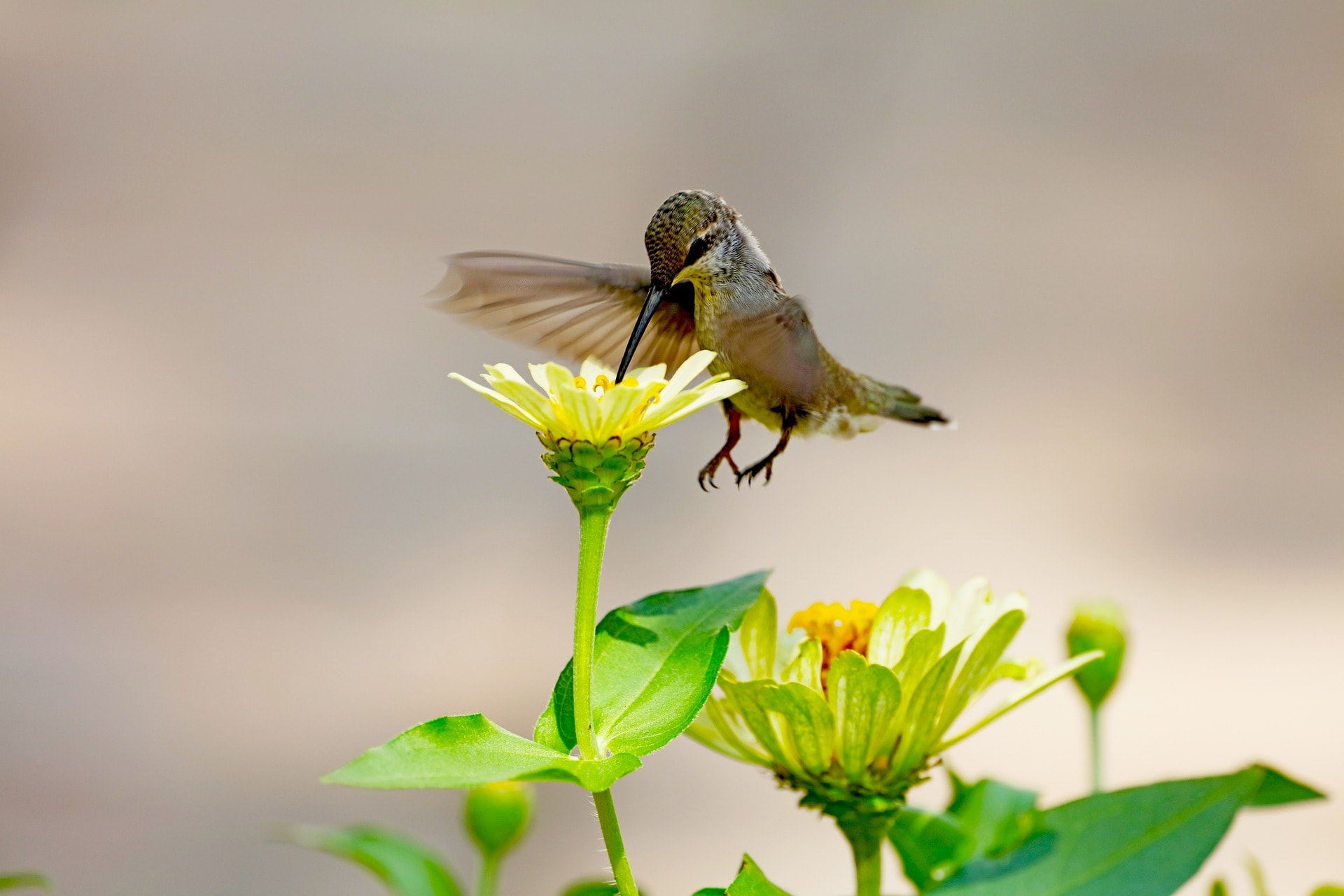
Here are some of my favorite hummingbird-approved flowers:
~Bee Balm (Monarda didyma); perennial; grows 2-4’ tall, full sun to half-shade
~Cardinal Flower (Lobelia cardinalis); perennial, red or purple, 3-4’ tall, full sun to half-shade
~Zinnia (Zinnia spp.), a favorite annual, 6” to 3’ tall, full sun. The taller varieties are easier for hummingbirds to access.
~Salvia (Salvia spp.), annual, and perennial (Salvia nemarosa) varieties; 18”-36”, full sun
~Bleeding Heart (Lamprocapnos spectabilis); perennial, 24-36”, prefer half-sun to mostly shade. Spring blooms, usually dies back in the heat.
~Lupine (Lupinus x hybridus); perennial, 3-4’, full sun
~Fuschia (many varieties!); a perennial in southern growing zones 8-11, an annual for the rest of us; full shade to half shade. Use in a hanging basket to attract hummingbirds. This is a great plant for shady areas, and the hummingbirds love the deep throats of the fuschia.
~Petunia (many varieties!); annual, great for hanging baskets and container pots as well as edging. For hummingbirds, flowers that are off the ground are better, such as a hanging basket or a tall plant. Full sun. Petunias will bloom all spring, summer, and fall. Petunias are a favorite for hummingbirds. These flowers are heat and cold tolerant, and they love the sunshine. Petunias can be put out early in the spring and they continue to bloom until a hard frost. Since petunias can get long and “leggy” as the season goes on, having a mixed planting to fill in some spots can help with visual appeal. Vinca is bushier, also loves the sun, and is a good companion plant for petunias, as well as being a good flower for hummingbirds.
Be sure to give your flowers a shot of fertilizer during the growing season. Growing flowers consumes a lot of energy. Flowers in containers need fertilizer once each month in order to keep blooming. Plants in the ground should have some compost spread around the plant in the spring to give them energy for the season.
Shrubs and Trees
~Azaleas
~Flowering Quince
~Rhododendron
Avoid Trumpet Vine or Morning Glory as they are invasive species.
Supplemental feeders:
When hummingbirds arrive from their winter sojourn, they have lost 1/3 of their body weight and need to eat a lot. A consistent source of food is important. If you have your feeder ready for the birds in April, then you may attract early visitors. It is important to maintain a regular supply.
If you put out a feeder, keep it filled on a regular basis. The hummingbirds will count on it as a regular food source in addition to the flowers in your garden.
An early flower source is helpful to help feed these tiny birds. Pansies and primroses can be a good source of nectar in the cooler spring months. Check the migration times for your area.
The birds need to eat a lot to restore the weight lost during the migratory period. A feeder helps supplement the flowers in early spring.
Again, before the hummingbirds head south, they will bulk up and eat as much as possible. Keep feeders filled consistently. The birds will often double their intake to prepare for the migration. Since this is a time when there are fewer flowers, the feeder helps keep the birds healthy.
Place the feeder about five feet off the ground. An ideal location is where is will be in the shade part of the day. Do not place a feeder close to a nesting area. Do not place feeders close to windows. Collision with windows is a top killer of hummingbirds.
Avoid red dye in the feeder food. It is not necessary to attract the birds and can cause harm to them. A colorful feeder is sufficient.
Hummingbird nectar is sugar and water. You can purchase the nectar pre-made or mix it yourself. You can make your own by using 1 cup of sugar for every 4 cups of water. Mix well until the sugar dissolves and then fill the feeders. Refrigerate any extra mix to use later.
Thoroughly clean the feeders at least twice each week to keep the feeder fresh. You could have one feeder on active feeding duty and one feeder which is cleaned and drying.
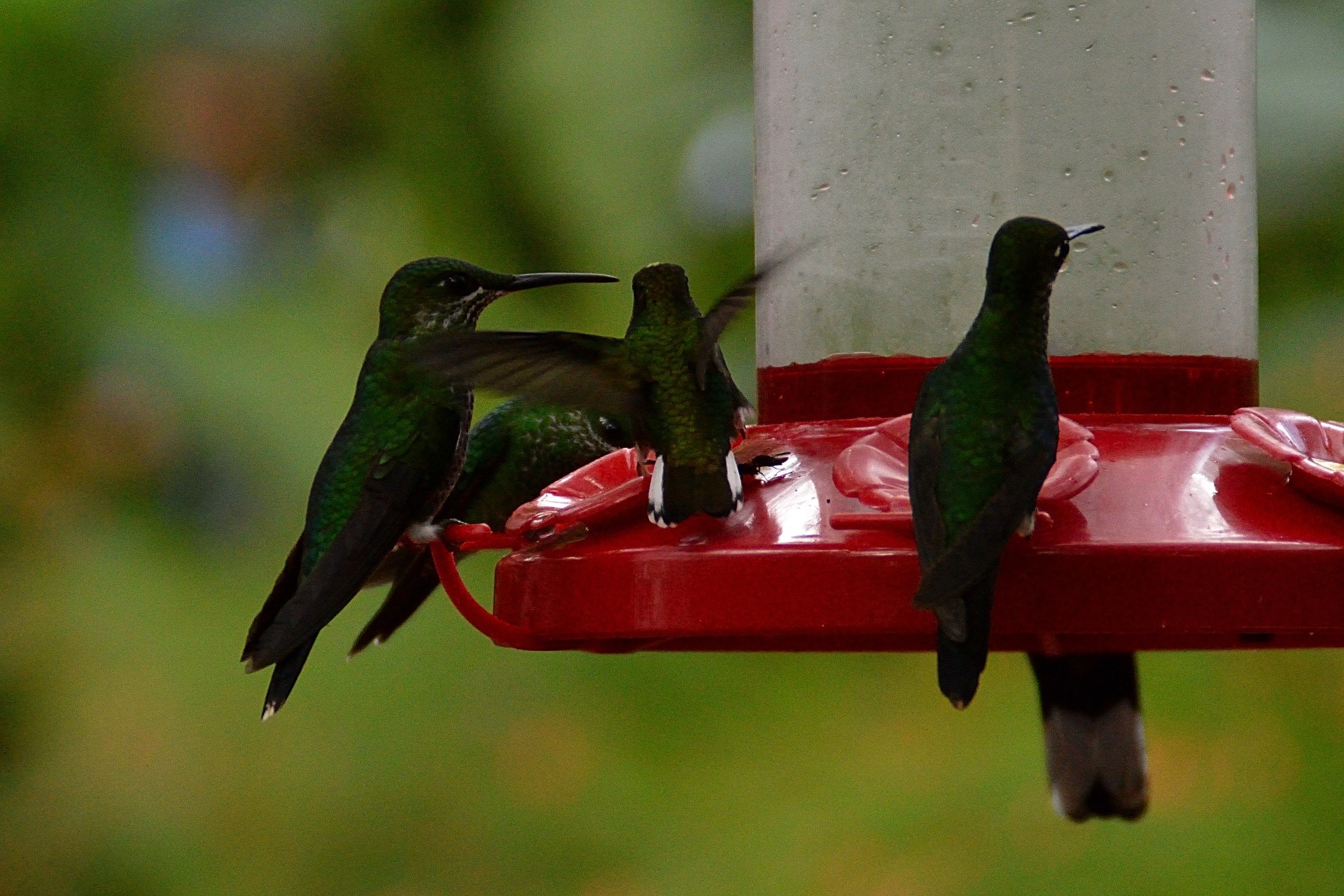
Water
Regular bird baths are too deep for our fast hummingbird friends. They need a shallow puddle in a shaded area. If there are broad leafed shrubs, the birds will rub against the leaves to bathe. If possible, moving water is preferred. A small fountain or mister is ideal. Otherwise, freshen the water each day.
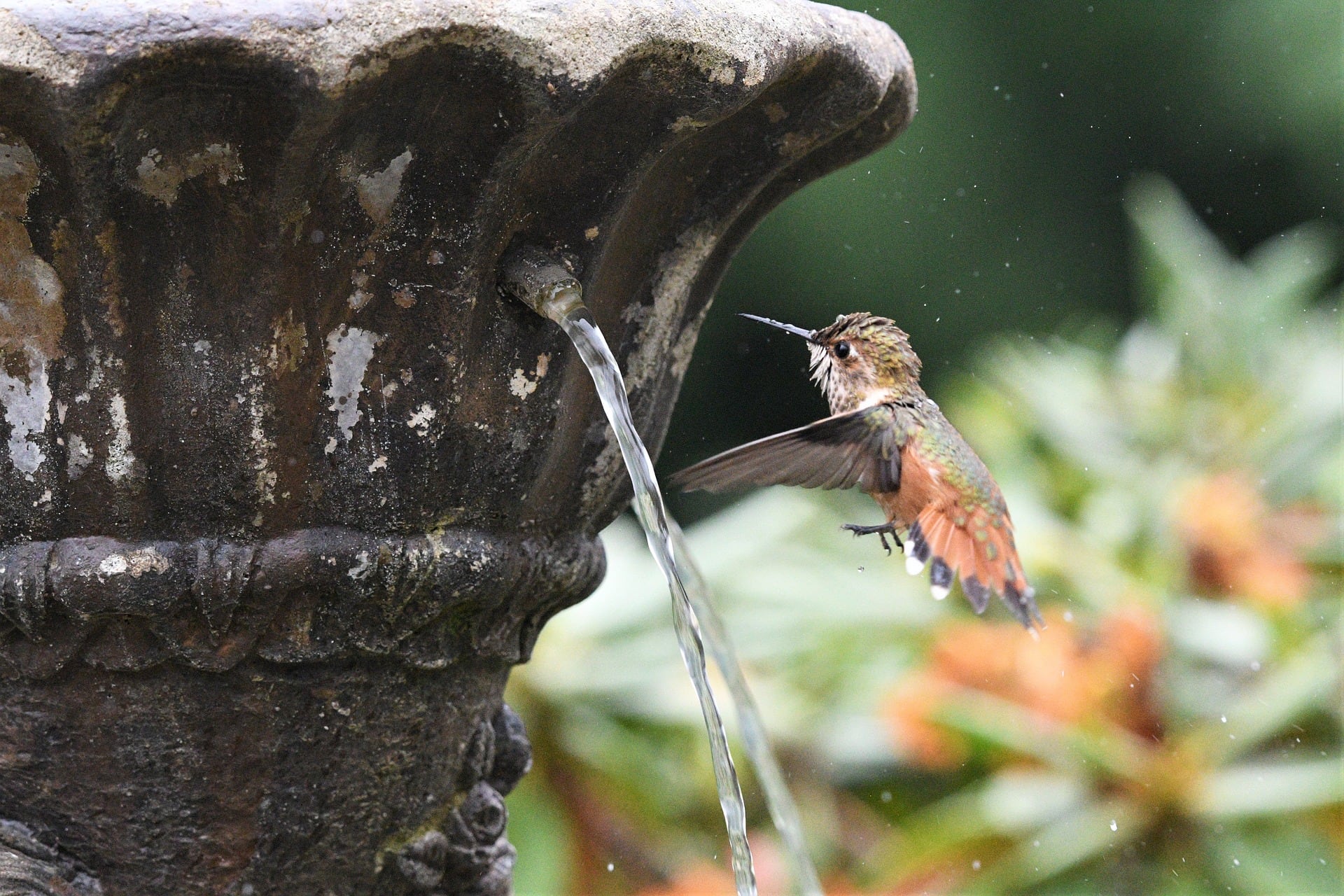
Shelter
Thick foliage on trees and shrubs provides safe spots for hummingbirds to roost. Thorny bushes are a plus, as they provide protection from predators such as feral cats. Chinese praying mantis (large brown mantis, about 3-4” long) will attack hummingbirds, as will small birds of prey (kestrel, merlin, hawk) and owls. Hummingbirds are most at risk when feeding.
You can place perches throughout the garden or near feeding areas, if you do not have trees or shrubs with available space.
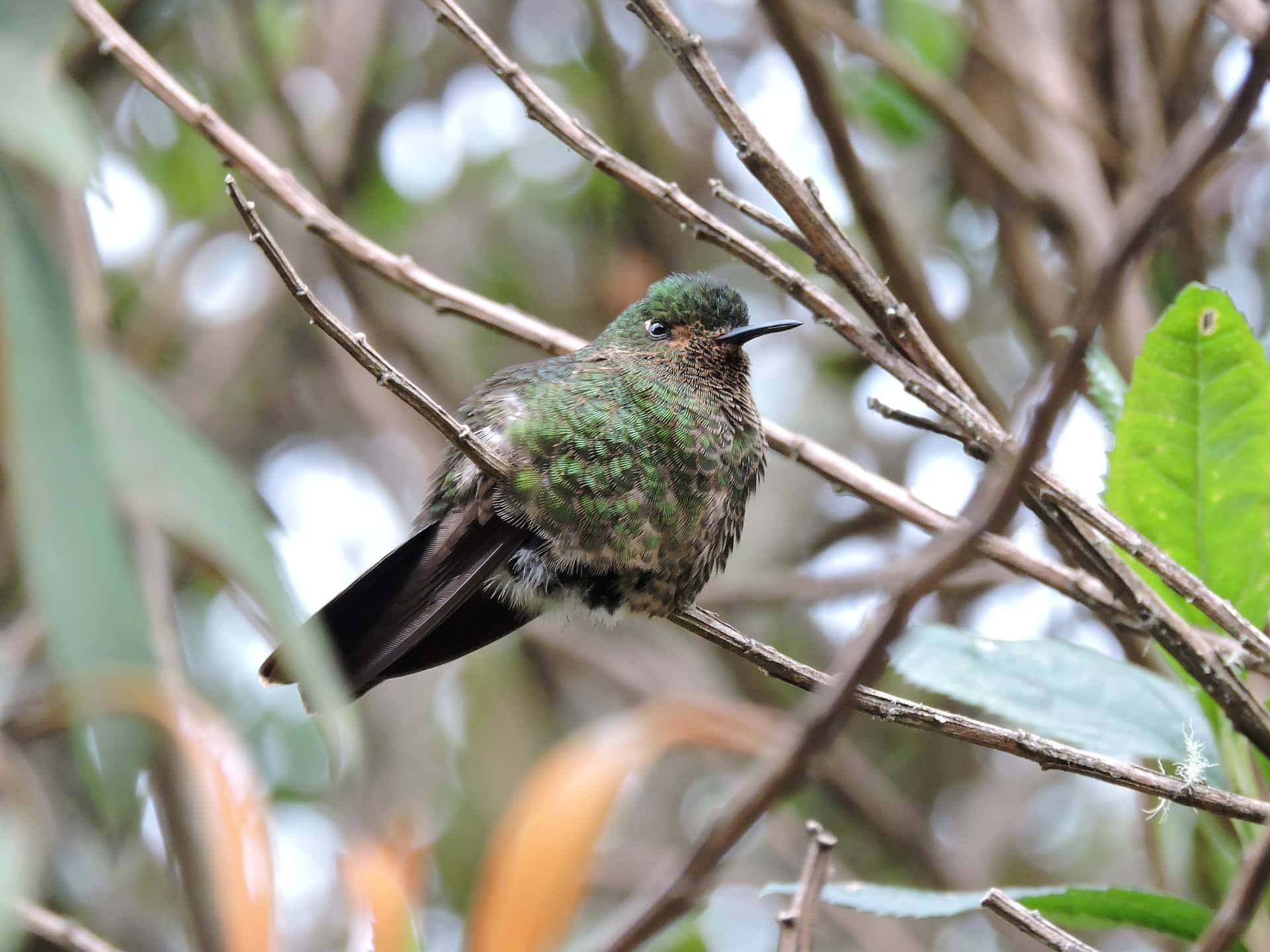
Nesting area
Hummingbirds will not nest in birdhouses. They nest in trees and bushes. Dense branches and leaves help hide nests, which are built of spiderweb silk, cotton fluff, or other thready items. The most common location for a nest is in the fork of a tree, with grasses, moss, feathers, fuzz, hair, and other fine materials making the nest. Spider silk is usually used to hold the nest together, making the nest a bit elastic. It can expand as the eggs hatch and the hatchlings grow. The nest, about 1.5 inches in diameter, is tiny, just like the birds. It is easy to think it is a discarded nest. Because they weigh so little, nearly any perch is sturdy enough for a hummingbird nest.
Hummingbirds lay one or two eggs. It is best to keep your distance, as the mother hummingbird is skittish and may abandon the nest.
Squirrels, crows, and bats are predators for young hummingbirds which are still in the nest. A nest among the brambles helps protect the young.
If you are fortunate enough to spy a hummingbird nest, keep your distance and enjoy.
Do not have an outdoor feeding station for cats. You do not want to encourage a feral cat colony if you are hosting hummingbirds. They are easy prey for cats while feeding.
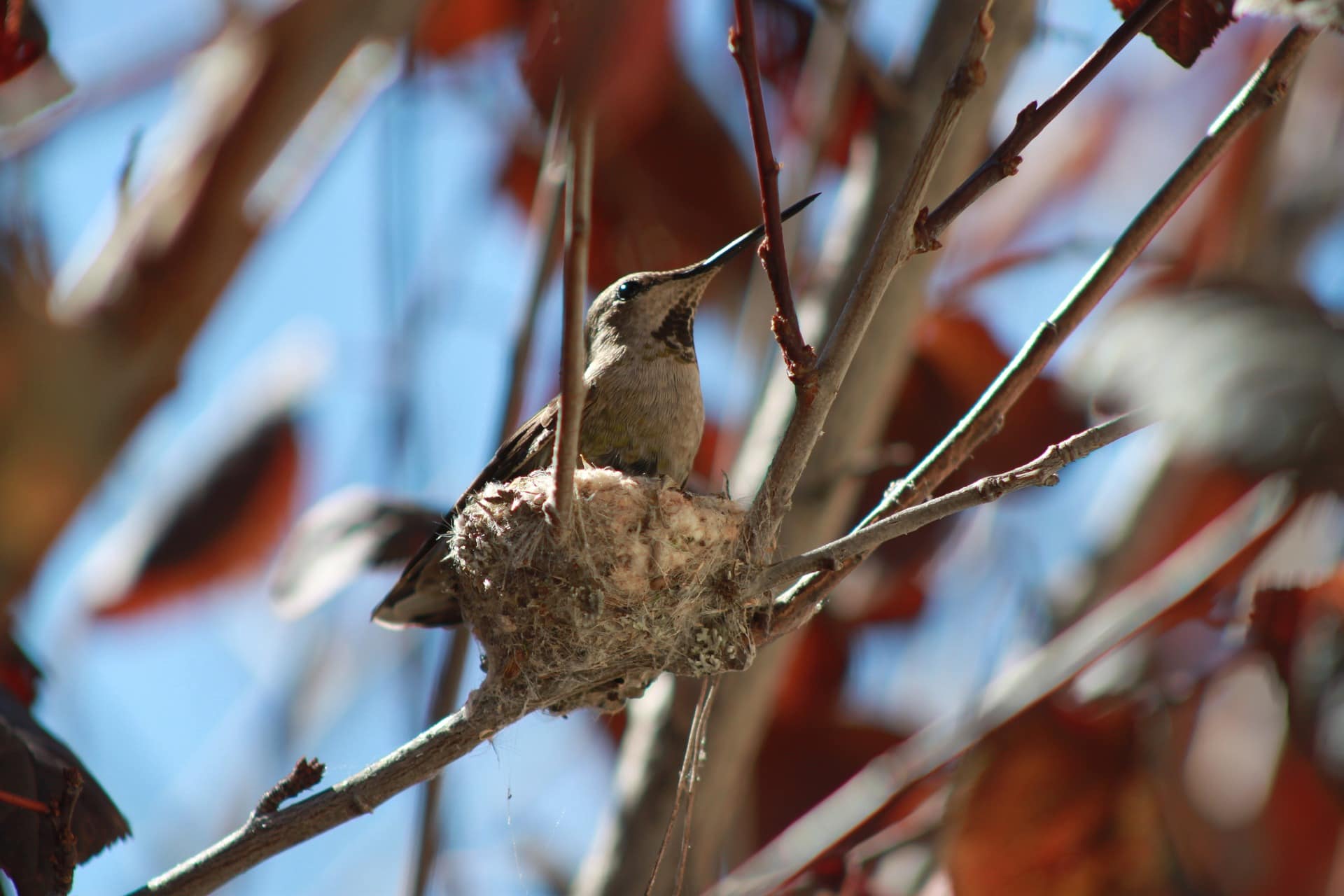
The Ruby-Throated Hummingbird is found throughout the eastern United States and into Canada. The Black-Chinned Hummingbird can be found from Canada to Texas, through the middle part of North America. The southwest of the United States is favored by Costa’s Hummingbird. Southern New Mexico and Arizona can see the Broad Billed Hummingbird and the Violet-Crowned. The northeastern United States can see Rufous and Anna’s Hummingbirds, sometimes year-round. Each variety sports different colors and different size, although none is particularly large.
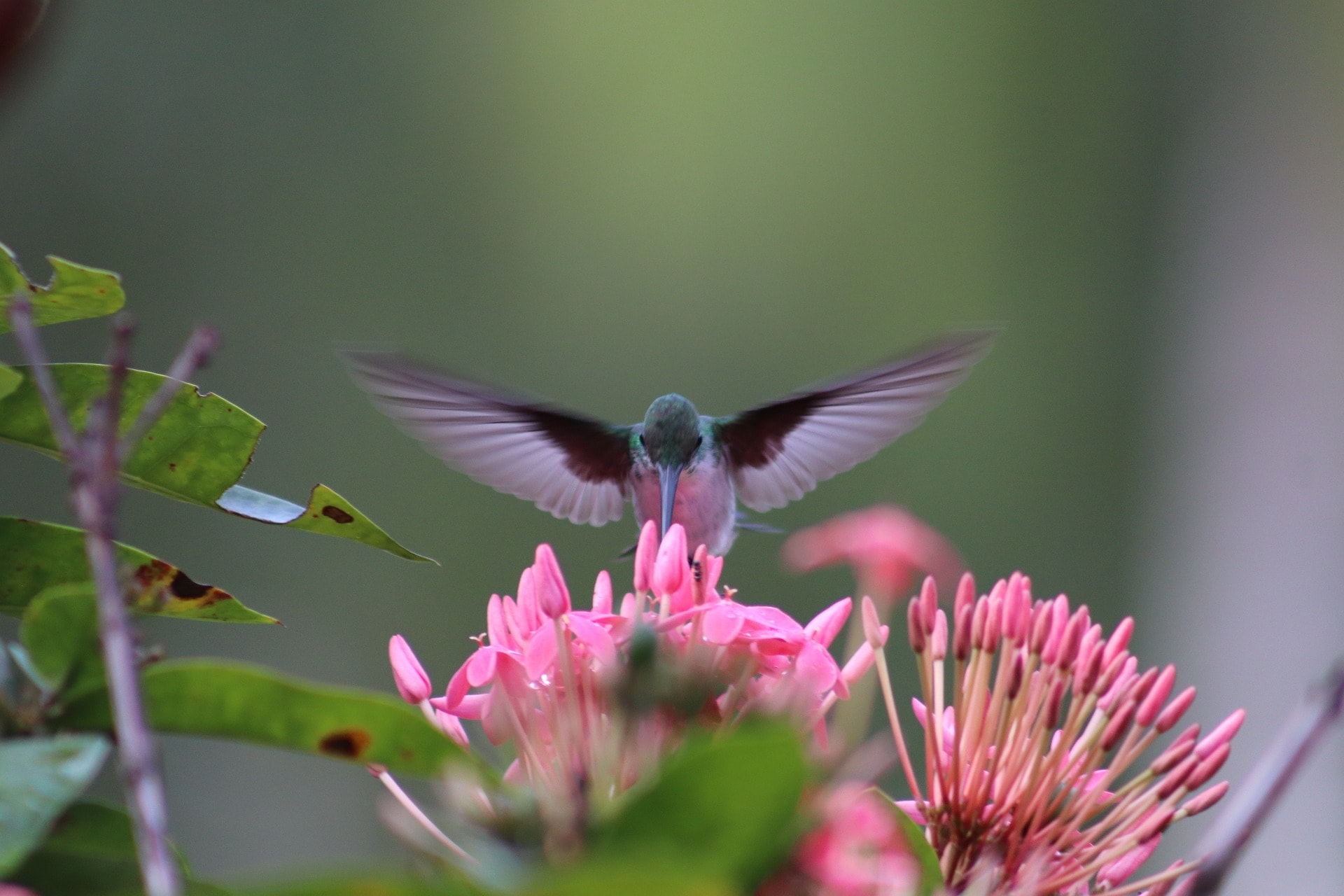
Hummingbirds are beautiful, fascinating, and good for our garden health. Have fun planting some hummingbird approved flowers and enjoy the visitors.
These are just a few ideas to help you keep your garden healthy and growing well. Growing something in the garden is good for you!
Sign up for our weekly email for insider notes on fruits and vegetables, flowers, and farming.
~Ruth
Pinch Waist Hummingbird Feeder
Shepherd’s Hook with 5 Prong Base
by John Shewey
by Donald Stokes









